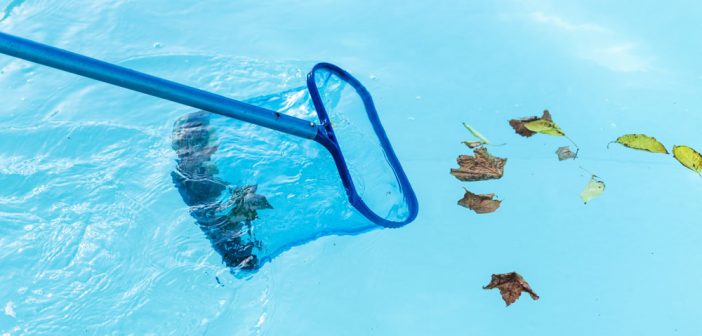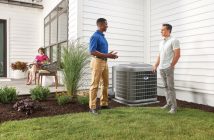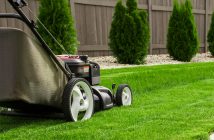Unfortunately most of us don’t have the privilege of living in an environment where we can keep our swimming pool open year-round. There are usually at least a few months when the pool will need to be closed and protected.
If you live where the winters are mild, closing it will keep it clean and protect the equipment from a possible freeze. If your winters bring you freezing weather, closing your pool effectively is essential to protecting its equipment and piping.
Closing your swimming pool is also a fairly simple process. Here’s an easy, 10-step guide and some helpful tips to keep your pool safe this winter.
Plan for the Best Time
There are a few things to consider when planning the timing of closing your pool. For one thing, you don’t want to close it too early, possibly missing out on some late-season fun. But you don’t want to wait too late in the season, making it difficult to deal with the weather. And then there’s the condition of the water to consider.
It’s a good idea to wait until the pool water stays below 65 degrees. If you close it with warmer water, algae has a better chance of blooming. You can also add a phosphate remover or other algaecide a couple of weeks before the closing to prevent algae.
Clean Everything
You’ll want your pool at its cleanest before you close it. Thoroughly skim the surface. Vacuum the bottom, and scrub the sides. It’s a good time to really dig in and get some detail cleaning done. The cleaner your pool is when you close it, the easier it will be to bring it back to life when you open it.
Check the Chemicals
Maintaining the chemical balance of the pool’s water is always important. Just make sure to stay on top of it all the way to closing day. If the water gets neglected because it’s getting colder outside, you might need to delay closing it for a few days until the balance is back in line.
You’re testing the chlorine level of the water as well as the pH, alkalinity, and hardness. Test kits are made to test each one, or you can use strips that test all of the chemicals at once.
Balancing the chemicals before closing the pool is the best way to maintain the integrity of the water over the winter months, making it quicker and easier to get the chemicals back in line when the pool is opened.
Shock
Giving your pool an extra-large dose of shock treatment before you close it will give the water an added boost of protection. The chlorine in the shock will help prevent algae growth, kill bacteria, and eliminate other harmful organisms in the pool water.
You’ll want to shock your pool a few days before it’s closed to give the chlorine levels time to recover. Once the chlorine level is between 1.5 and 3.5 PPM, the pool is ready to be closed. There are also winterizing chemicals that can be added at this point to give the water even more protection.
Start Taking Things Apart
Now it’s time to start putting everything in storage, keeping it safe for next year.
• Vacuums, hoses, nets and other cleaning equipment can be thoroughly dried and stored. You’ll want to keep one skimming net out to keep the surface of the water clean until it’s finally covered.
• Any inflatables and other pool toys need to be dried and deflated (if needed) for storage.
• The skimmer baskets can be removed.
• Sometimes the steps, slide, and railing are removable for storage.
• If any wall fittings pop out, they should be removed and stored with the skimmers.
Set the Water Level in the Pool
The ideal water level is a little different, depending on how cold your winter gets. Areas with freezing temperatures would want the water level to be four to six inches below the skimmer or tile line. Pools in milder climates can have their water filled all the way to the top.
Closing the Pump, Filter, and Heater
The most important part of closing the mechanical components is making sure that all of the water is removed from the inside of the pump, filter, and heater. High-powered air pressure and wet-dry vacs are often used to get all of the water out. Of course if you’re not comfortable with this part of the process, you can always call in a professional.
Chemical Feeders
If you use a chemical feeder to maintain your pool’s chemistry, it needs to be drained and disconnected. Keeping it operating when the pool is closed can damage the pool’s equipment.
Cover the Pool
You’ve set yourself up for success, and now it’s time to cover the pool. The last thing that you need to do before the cover goes on is to give the water one last swipe with a net to get rid of any final debris. If you have an above-ground pool, now is when the air pillow is secured in the center to balance the water pressure.
You’ll either be covering it with a leaf net, safety cover, or winterized cover for freezing temperatures. The cover needs to be tight and secure, able to withstand the wrath of Mother Nature for a little while.
Monitor the Chemical Balance Monthly
Throughout the winter season, it’s in your best interest to monitor the chemicals occasionally, making sure that there aren’t any issues. Of course you don’t expect the water to be in perfect condition after a few weeks or months, but if you see any alarming levels or the presence of algae, you’ll be able to act on it quickly.
You can either test the chemicals yourself, take a pool water sample to your local professional for testing, or have your pool service come out and keep an eye on it for you. It’s just another way to make it easier to open your pool when it’s time for the fun again.









